№1 among the best
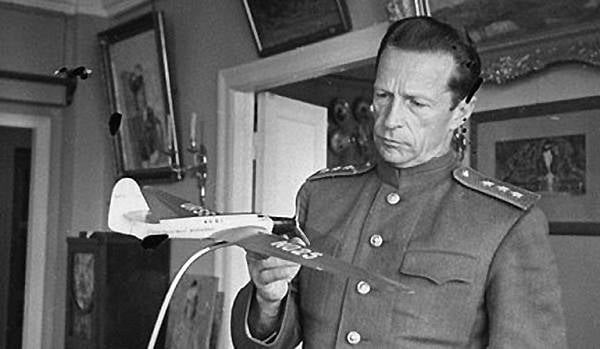
Aviation developed many prominent people. Name M.M. Gromova is undoubtedly in the front row. A wide circle of Russian citizens, people of the planet, he became known in connection with long-distance flights of the 30s. But this man had an interesting youth, youth, maturity as a TsAGI test pilot, participation in the Great Patriotic War, post-war work in the aviation industry and social activities.
Mikhail Mikhailovich Gromov was born on February 24 of the year 1899 in Tver. His parents married in secret without being blessed. In the early years, the family lived in poverty. Only after graduation from the university by his father, Mikhail Konstantinovich, and the beginning of work as a military doctor, did the young people stand up. The family moved to the father’s place of work: from Kaluga to Rzhev, then to Losinoostrovskaya, near Moscow.
Parents did everything to make the boy grow up healthy, strong, diversified. From the age of six he already knew how to swim, soon he received a small-caliber rifle as a gift, following the example of his father he started practicing gymnastic equipment. From his father, he took drawing skills, love of music and singing. From a young age, the boy received a special predilection in the family of his mother's parents - there for the first time he felt affection for horses. This attachment may be associated with his future wife - the famous rider Nina Georgievna, and he remained until his old age.
Eight years old, Mikhail entered the gymnasium, but soon his parents transferred him to a real school. The training here was very good. Much attention was paid to physical culture, gymnastics. As a student, Misha became interested in aircraft modeling. At first he made gliders, then models of airplanes with a rubber engine.
Michael's 15 anniversary coincided with the start of the First World War. These days, being on a visit to his father in the front-line hospital, the boy first saw a real combat aircraft, his takeoff and return after the battle.
After graduating from school, Mikhail entered the Higher Technical School, but, as he writes himself, “I was not very interested in studying at VTU.” And what's more, he became interested in a completely different matter - weightlifting, setting the Moscow benchmark in 17 years. Another passion was painting.
But there was a war, the moment of recruitment was approaching. Mikhail was fortunate enough to enter the theoretical courses of aviation of Zhukovsky. So determined the aviation fate of Gromov.
The courses were harsh military discipline, with drill, a clear rhythm of life and occupation. However, he asked for permission from his superiors to use a barbell in his free time. It was under these conditions that Mikhail got the affectionate nickname “Elephant”, which was fixed to him for a long time.
A distinctive feature of studies at the courses was not only theory, but also practical lessons on disassembling and assembling engines, blowing models (and 6 months were allotted for all of this!). Theoretical disciplines read N.E. Zhukovsky, A.A. Mikulin, B.S. Stechkin, V.P. Vetchinkin, V.S. Kulebyakin, whose names were subsequently entered into history domestic and world aviation.
For the first time, Gromov was in the air as a passenger in the spring of the year 1917, being a cadet. This happened at the test station of the Dux plant at the Central Aerodrome in Moscow. Test Pilot BI Rosinsky, who performed a test flight over the Farman-130 aircraft, suggested that Mikhail take the place of a passenger with the duties of controlling engine oil pulsation.
Upon completion of the Zhukovsky courses, all students were sent to the Central Moscow Aviation School (TSMSA). Here, after passing a technical course, training flights began on Farman 4. Michael soon received the right to independent flights. But the October Revolution broke out, and the activity of the school stopped. Many instructors and cadets quietly left school, others, including Gromov, stayed and continued their studies. Part of the pilots was sent to the front, and Gromov was left at the school as an instructor.
A group of students mastered the "Voisin", and the instructor - flights on the "Moran", then - on the "Newpore". This was followed by the development of more stringent aircraft - "Debrazhas", combat aircraft "Parasol".
At this time, the famous spinner KK became the instructor of the Moscow school. Artseulov, from whom Gromov essentially received his first flight research lessons. Already at school, he actually formulated for himself and began to apply the principles of psychological education for schools. The principles consisted in the need for self-education, error analysis, the development of foresight and speed of reaction.
There was a civil war, and soon the school created a group of combat use. Lead it instructed Gromov. He mastered the English fighters "Martinside" and "De Havilland" and the German "Fokker D-7" - the best fighting vehicles of the time.
Intensive flight work did not prevent him from doing weightlifting. In 1923, he became the champion of the country! In the same year, Gromov was sent to Serpukhov to train several groups of pilots for shooting and bombing. It was here that the first meeting of two famous pilots in the future - Chkalov (listener) and Gromov (instructor) - took place.
1924 year was for Gromov a year of transition from instructor to test work. Here is how it was. The school was based at the Central Aerodrome, next to the Air Force Institute. At this time (winter 1924 of the year), the Dutch Fokker D-11 fighter entered the tests. He was tested by pilots who did not own the art of aerobatics. Gromov received permission to fly, demonstrated the high maneuverability of this aircraft and has since been enlisted in the test cohort.
Further, the Fokker D-13 became the object of testing and mastering. Based on the experience of testing these aircraft, Gromov formulated an important safety principle: “It is necessary, and I understood it, only one thing: stability along all axes. The rest - flair to the aircraft. This is not a property of the aircraft, but a pilot, a man. ” It turns out that when the notion of “human factor” arose, which in our time is considered the most essential component of flight safety!
For testing of domestic-made aircraft, pilots of the Scientific-Research Institute of the Air Force were chosen by the designer. So, Gromov was invited by A.N. Tupolev and N.N. Polikarpov for testing machines of its design.
At the same time, Gromov mastered night flights, methods of navigation, flights in the clouds, radio communications. During this period, flight test methods with specific performance were not developed. Therefore, the development of "integral" assessment when performing long-distance flights. These flights were also of political, international importance. AK-1, P-2 and P-1 participated in the group flight to China by Gromov. He piloted one of the P-1. Accompanied the flight of two Yu-13. The group started 10 on June 1925 of the year, and with a large number of intermediate and forced landings, covered the distance of 7000 km, ending the flight in Beijing.
By decision of the country's leadership, the P-1 aircraft were to continue the flight to Tokyo via Korea and the Sea of Japan. They put new engines on the cars. 29 August 1925 flew out. Due to the harsh weather conditions, one of the aircraft made an emergency landing in Japan. Gromov finished at the planned airfield near Tokyo. It should be remembered that the commander was then only 26 years old!
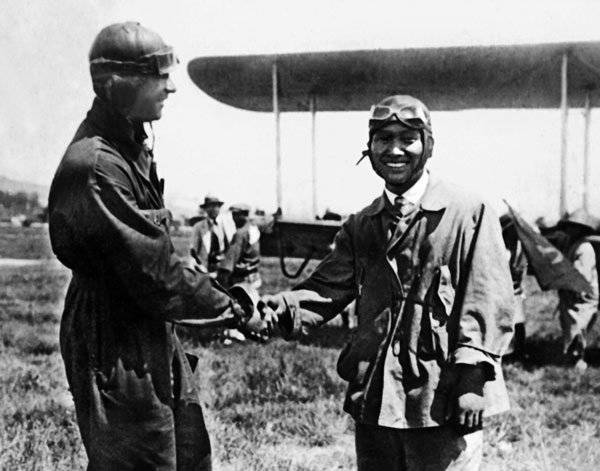
30 August 1926, Gromov flew to European capitals. True, the material part failed: because of the leakage of the expansion tank of the engine water radiator, he was forced to return to Moscow. Re-departure was more prosperous. Nevertheless, in Paris, had to replace the drip radiator. The flight was completed successfully. The plane traveled to Berlin, Paris, Rome, Warsaw and returned to Moscow, passing 7150 km in three days.
Gromov recalls: “After this flight, the unspoken title of the number one pilot was confirmed after me. What could be more honorable, high and expensive! With pride I tried to carry this title through all my life. ”
Michael continued test flights. He was instructed to conduct a test program for the I-1 fighter on a spin after an unsuccessful flight of another pilot, which ended in an accident. For the first time he was ordered to wear a parachute. The order turned out to be very appropriate: after several attempts to pull out of a corkscrew, on the 22-m orbit, the pilot left the plane at a height of about 120 m and landed safely. It was April 25 1927. The corkscrew was flat!
The next day for Gromov, and, perhaps, for a whole generation of our aviators, turned out to be a milestone. He raised in the first flight a remarkable creation of the OKN NN. Polikarpova - training Y-2. Having completed the full scope of the Y-2 tests, Gromov gave him a ticket for a long life. Then I-3, P-5. Among the unique flight research should be attributed, and flights according to the plan of the psychophysiological laboratory of the institute. So, he had to climb without oxygen to a height of 7200 m.
Gromov experienced almost all TsAGI aircraft designed under the direction of A.N. Tupolev. Passenger ANT-9 (1929 year) after testing sent to fly across Europe, with a preliminary check on the route Moscow-Odessa-Kiev-Moscow. In flight on the Moscow-Berlin segment, Gromov, the only pilot of a three-engined aircraft, served more than 10 hours without leaving his seat. After Rome and Marseille - landing near Paris due to structural failure. Then - London, Warsaw, Moscow.
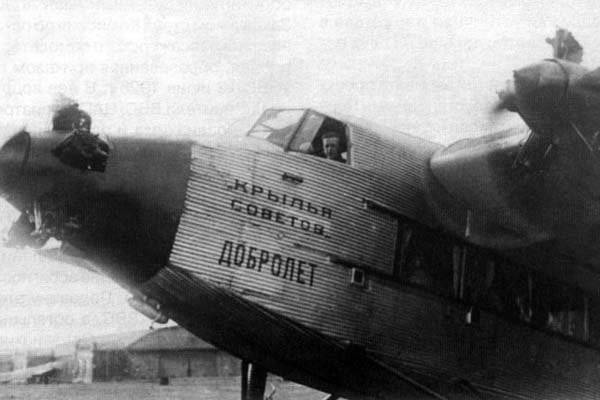
Despite such a long break in test flights, Gromov tested the I-4 fighter, the heavy four-engined TB-3 bomber. During the break - various flights on special missions on ANT-9.
Here are the lines from the performance appraisal for 1926-27 for the senior pilot of the Applications Department of the Red Army Gromov Air Force Scientific Research Institute: “An excellent pilot who understands airplanes, which is especially valuable when testing aircraft. Possesses great will power and perseverance, is well developed, technically prepared satisfactorily. Easily versed in the setting. There is no combat experience, no ability (and perhaps no desire) for administrative work. Selfconfident. Not active enough in public life. ”
Bright, clear and characteristic assessment. In the 1930 year, carrying out the last test flight on the TB-5 aircraft, Gromov found himself in a difficult situation: one of the engines caught fire and exploded. The test was attended by renowned test engineers, future leaders of the Flight Research Institute, Max Arkadyevich Taits, Alexander Vasilyevich Chesalov, and Daniel Stepanovich Zosim. The flight ended safely - everyone was alive.
In August 1931, the head of the Red Army Air Force Ya.I. Alksnis and Deputy Head of TsAGI A.N. Tupolev sent to the USSR Revolutionary Military Council a memorandum with the draft design of the aircraft attached to it to establish a range record, which could also be used as a long-range bomber. The government has authorized preparation for record flights and the construction of two ANT-25, which received the designation RD (distance record).
Recalling the role of MM. Gromov in the development of domestic aviation, it is appropriate to say that under the control of Mikhail Mikhailovich the first flight of the first instance of the ANT-25 (RD) aircraft was made. This happened 22 June 1933 of the year. After 2 of the month, Gromov took to the air a second copy with a modified M-34P engine.
Two flight crews of the Scientific-Research Institute of the Air Force were issued for flight tests: the first was MM Gromov, A.I. Filin and I.T. Spirin, in the second - AB Yumashev, P.M. Stefanovsky and S.A. Danilin. The tests were not simple. It took a large amount of fine-tuning the aircraft to improve aerodynamics, engine, propeller. The crew cabin was being finalized. And only from the end of June 1934, the crew under the leadership of Gromov began to carry out long-distance test flights of the second modified aircraft. The final flight of this crew of the 10-12 of September 1934 of the year was crowned with a world distance record of a closed route: it passed through a closed triangle over the European part of the USSR 12411 km in 75 h. 02 min. Preparation began for a long-distance flight to South America (to Brazil).
A year later, the ANT-20 “Maxim Gorky” aircraft was delivered to the airfield, and the TsAGI Chief Pilot Gromov took part in the design and creation. The tests of this outstanding aircraft passed quickly and practically without complications. Its characteristics were close to the calculated ones. Gromov on this plane led the aviation connections at the May Day parade.
Gromov at the helm of the Maxim Gorky aircraft
On the eve of that day, a misfortune happened to Gromov - the stomach ulcer bleeding suddenly opened. And this is a practically healthy athlete. But no one except him could fly on Maxim Gorky. He completed the flight and got into the hospital. It was during his illness that two events occurred: because of the lack of discipline of the pilot of an escort plane, the Maxim Gorky plane crashed, and S.A. Levanevsky together with G.F. Baidukov received permission to fly ANT-25 across the North Pole to America. At the same time, the crew of Gromov was offered to continue preparations for the flight to South America (through Africa) on the first copy of the aircraft.
In the 1936 year, Gromov completed the treatment and again joined the TsAGI test pilots. The first aircraft that he tested and mastered was the passenger ANT-35, on which he later flew to an air show in Paris.
In the spring of 1937, the VP Chkalov turned to I.V. Stalin with a request to approve the flight to ANT-25 across the North Pole to America. Coming out of the hospital, where he was on the current examination, Gromov addressed the same letter to Stalin. 19 June 1937, crew V.P. Chkalov began flying across the pole and after 63 hours. The 16 mines landed in the United States at the Vancouver airfield, not exceeding the official distance record in a straight line 10104 km, set earlier by the French. 12 July 1937 of the year to break the world distance record started in a transpolar flight crew Gromov. After 62 hours of 17 minutes, the Gromov plane landed successfully in San Jacinto near the Mexican border. The French record was exceeded by 1044 km.
Aircraft crew Gromov in San Jacinto
Participants in the flight and specialists who provided the flight were awarded government awards. Gromov was awarded the title Hero of the Soviet Union. The International Aviation Federation (FAI) awarded Gromov’s crew members the De Lavaux medal “For the best aviation achievement of the year 1937”. It was then that the Higher Attestation Commission of the USSR approved Gromov in the academic title of professor of "technical operation of airplanes and engines." At the beginning of 1938, Mikhail Mikhailovich was given the military commander rank.
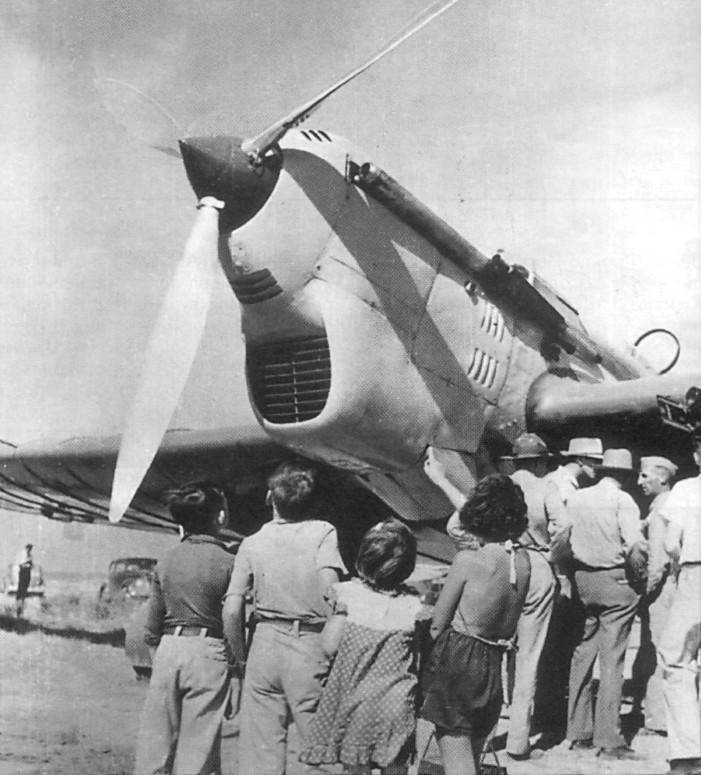
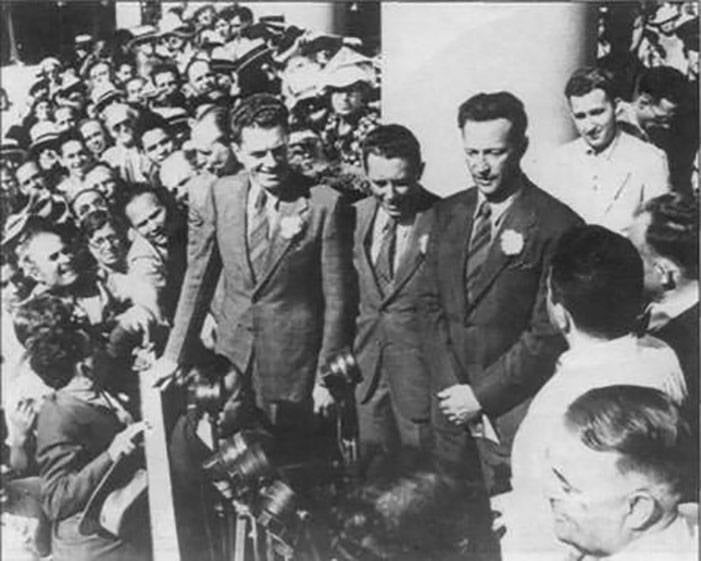
Honoring the crew of MM Gromov in the United States
In 1939, Stalin offered Gromov to return to the air force and lead the Air Force Research Institute. Gromov convinced the leader that the best place for him was the created Flight Research Institute. He writes: “Alas, the flight romance from that moment was over and the work began out of heart”. So he received an appointment to the post of head of the LII. He plunged into the organizational and technical troubles of preparing the team for solving big problems.
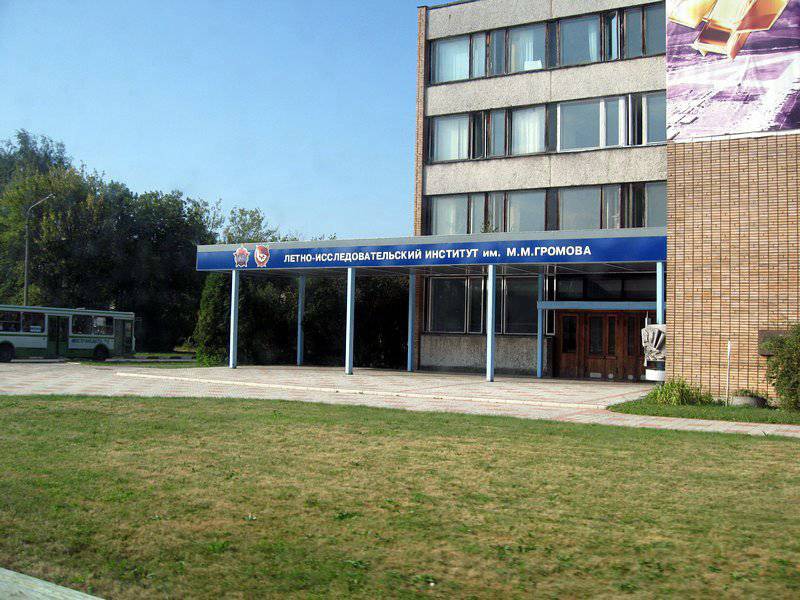
The story gave him some time to work on the organization of the LII on the basis of several departments of TsAGI: the Great Patriotic War began.
In the most difficult period of the war (from 1941 of the year to the middle of 1942), Gromov, together with other leaders of the LII, was engaged in maintaining the institute in working order, creating branches of the LII in Kazan, Novosibirsk, deploying flight research work, interacting with the front line and units experienced and serial factories.
Making sure that the fate of LII in the reliable hands of his assistants - Chesalov, Taits, Stroyev and others, in 1942, Gromov joined the active army in the year. He called in his division several test pilots LII, who successfully participated in the hostilities, gaining experience in combat use. In March 1942, Gromov was appointed commander of the 3 air army, and then with the rank of lieutenant general, commander of the 1 air army operating on the Western Front.
Armed parts of the army were IL-2, Pe-2, Yak-3 and others. Passed checks in combat conditions one of the first copies of the Tu-2. The army consisted of the French regiment "Normandy", which the commander paid great attention to combat training. In the summer of 1944, Gromov, having received the rank of Colonel-General of Aviation, was appointed Deputy Air Force Commander for Combat Training of Frontal Aviation. One of the important tasks was to reduce non-combat losses in front-line aviation. Particular attention was required aircraft "Air Cobra", their behavior in a corkscrew, the development of the Yak-3 young pilots.
In the 1949 year, Gromov went to work at the Ministry of Aviation Industry as head of the Flight Operations Department. Flight test departments of all experimental and production plants and institutes became under his jurisdiction. Here again, Gromov's special properties manifested themselves: clarity of task setting and exactingness. On his initiative, for the first time in our country, a unique educational institution was created - the Test Pilot School at LII. Almost all test pilots in the aviation industry and civil aviation subsequently underwent training there. Today, this school is named after one of its outstanding graduates, A.V. Fedotov.
Gromov passed away on 22 on January 1985, on 86, the year of his life. His name now bears the State Scientific Center - Flight Research Institute.
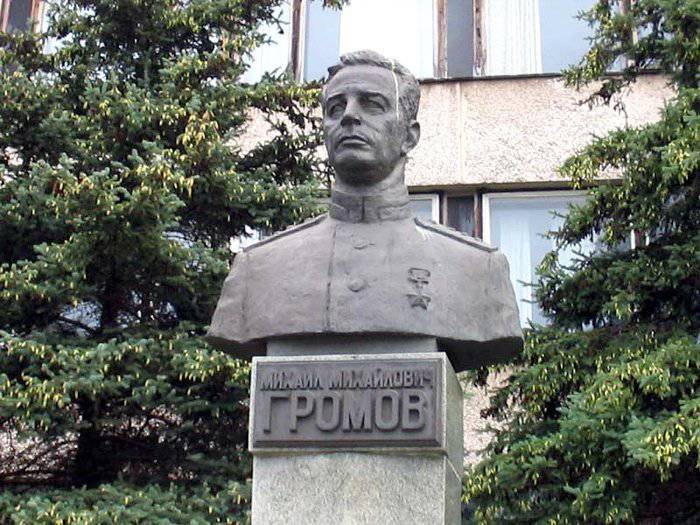
Sources:
Rybalko V.V. Pilot №1 // Wings of the Motherland: Sat. articles. - M .: DOSAAF USSR, 1983. - C.70-72.
Reznichenko G.I. All life is to heaven. - M .: Politizdat, 1983. - C. 12-23, 46-51, 73-82.
Vasilchenko K. Pilot number 1. // Wings of the Motherland. 1999. No.2. - S. 13-15.
Gromov M.M. On earth and in the sky. - M .: Glasnost, 2011. - S. 32-40.
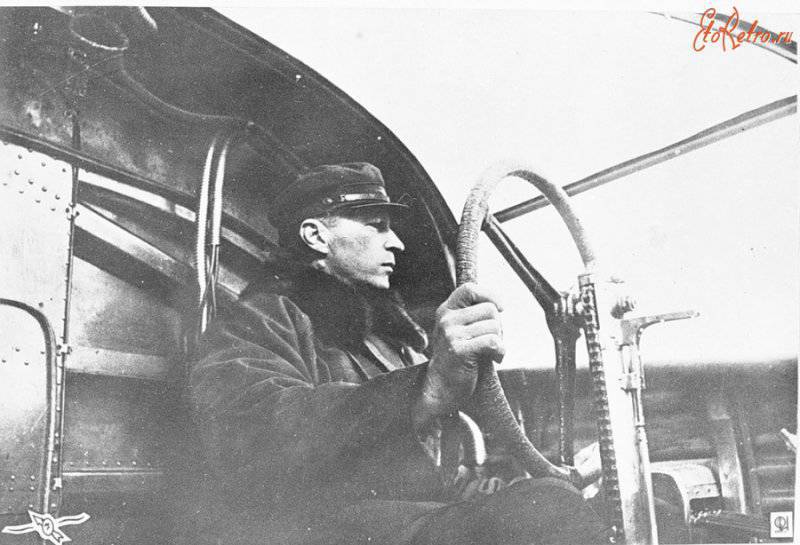
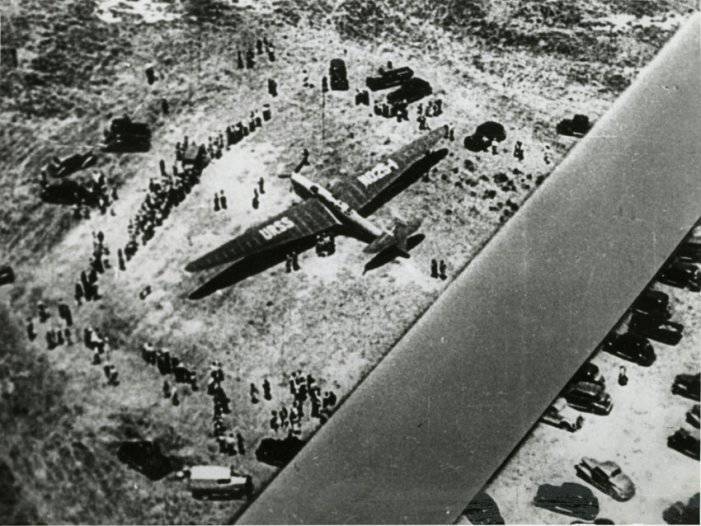
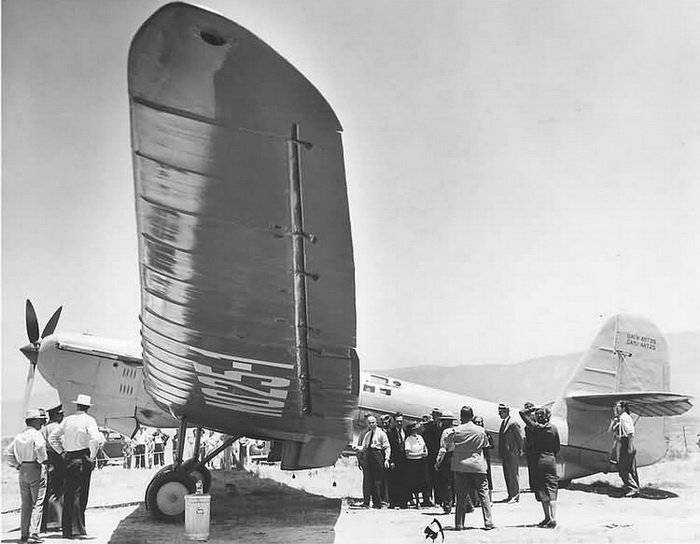
Information